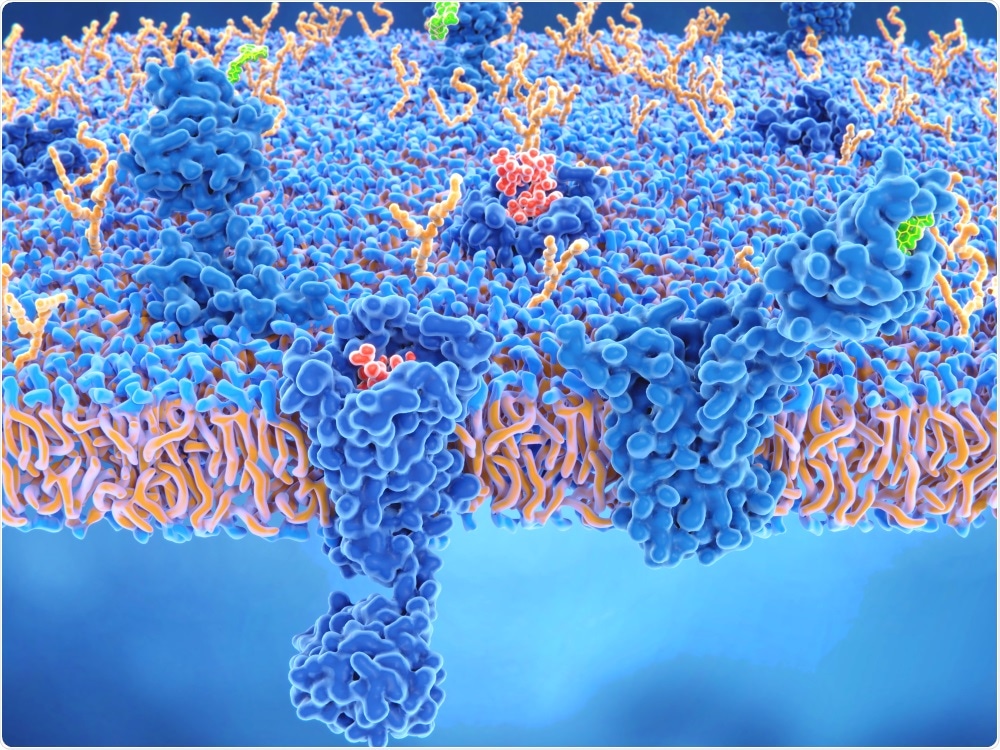Although most of the research on the endocannabinoid system focuses on its involvement in the CNS and immune systems, a significant amount of research over the past 20 years has demonstrated that this system also plays a role in maintaining several important functions of the skin. This article will examine the functions of the endocannabinoid system on the skin and its involvement in several skin conditions.
 Juan Gaertner | Shutterstock
Juan Gaertner | Shutterstock
Functions of the endocannabinoid system
The endocannabinoid system is comprised of various endogenous ligands, their receptors, and a complex enzyme and transporter apparatus. Each of the components of the endocannabinoid system is involved in either synthesizing, releasing, transporting and/or degrading various endocannabinoid molecules throughout the body. Furthermore, molecules that have been recognized as exhibiting “cannabinoid-like” roles can also be involved in the endocannabinoid system pathway.
In addition to endogenous cannabinoids that naturally exist throughout our body is a second class of cannabinoids known as phytocannabinoids. To date, more than 100 different phytocannabinoids have been identified from the Cannabis genus, most notable of which include the main active compounds of tetrahydrocannabinol (THC) and cannabidiol (CBD).
Both endocannabinoids and phytocannabinoids have been shown to either activate, antagonize or inhibit a wide variety of different cellular targets in the human body.
The endocannabinoid system in the skin
An extensive amount of research over the past two decades has demonstrated that both endocannabinoids and phytocannabinoids exert various biological effects in the skin homeostasis.
Numerous cell types of the skin, some of which include epidermal keratinocytes, melanocytes, mast cells, fibroblasts, sebocytes, sweat gland cells and certain populations of hair follicles have been shown to host different endocannabinoid molecules and receptors.
With this information in mind, researchers have focused their endeavors on understanding how these endocannabinoid ligands and receptors play a role in skin-related disorders.
Endocannabinoids and skin conditions
The influence of the endocannabinoid system on a wide variety of skin conditions is well-documented. In addition to the skin conditions discussed below, endocannabinoid signaling has also been associated with atopic dermatitis, melanoma, systemic sclerosis, wound healing processes, non-melanoma skin cancers and much more.
Acne
One of the most established side effects of cannabinoid abuse is acne, which clearly demonstrates the ability of the phytocannabinoids of this substance to have an effect on human sebaceous glands present within the skin.
Researchers have found that both CB1 and CB2, which are two predominant endocannabinoid-responsive receptors, are expressed in human sebaceous glands. The discovery of CB2 in human sebaceous glands led to researchers uncovering a role for this receptor in maintaining homeostatic sebaceous lipogenesis (the formation of fats within sebaceous glands). Any dysregulation to the endogenous sebaceous pathway, such as the overstimulation of these receptors, can therefore promote the development of both seborrhea and acne.
Pigmentation disorders
In vitro studies on primary human melanocytes have shown that these cells express various endocannabinoid receptors including CB1 and CB2, endocannabinoid target, GPR119 and the cannabinoid-responsive calcium channel TRPV1.
When exposed to CBD, human epidermal melanocytes were found to exhibit enhanced melanogenesis and tyrosinase activity. The ability to activate this CB1-coupled signaling pathway indicates that this type of treatment could be used to better understand chronic depigmentation conditions like vitiligo.
Psoriasis
Psoriasis is a chronic inflammatory skin disorder. The pathogenesis of psoriasis, while poorly understood, has been associated with both genetic and epigenetic abnormalities, as well as changes in the microbiota and pH of the skin.
Understanding the anti-proliferative and anti-inflammatory properties of various endocannabinoids, such as those involved in the CB1 and CB2 pathways in the skin, has led to the suggestion that targeting these pathways could assist in the development of more effect psoriasis treatments.
In fact, the relationship between the dysregulation of endocannabinoid pathways and psoriasis development has been demonstrated by several different studies. For example, elevated levels of anandamide in the plasma, increased activity levels of fatty acid amide hydrolase and monoacylglycerol lipase in granulocytes and upregulation of GPR55 has been associated with potential involvement in endocannabinoid dysregulation of psoriasis patients.
Source:
Toth, K. F., Adam, D., Biro, T., & Olah, A. (2019). Cannabinoid Signaling in the Skin: Therapeutic Potential of the “C(ut)annabinoid” System. Molecules. 24(918). DOI: 10.3390/molecules24050918.